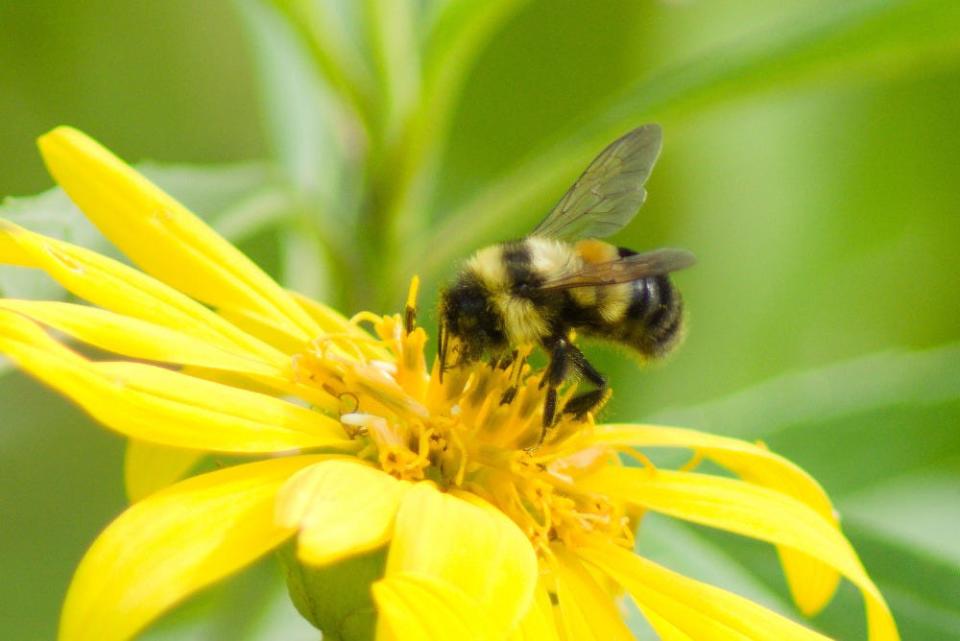No Mow May; Why should I stop mowing for a month?
"No Mow May" is about more than just not mowing your lawn for a month. The idea behind the movement is to make space for valuable pollinators and small creatures.
Bee City USA, an organization devoted to preserving native pollinators, spoke to the value of No Mow May on its website. The group said that lawns cover 2% of land in the US—40 million acres in total—making them the largest irrigated crop grown in the nation.
With chemical treatments, fertilizers, weeding, mowing and more, Bee City says lawns provide little benefit to wildlife and can often be actively harmful.
So, should you abstain from mowing for a month? Here are the answers to all your No Mow questions.
More: Conservation groups sue US Forest Service alleging Pisgah-Nantahala plan endangers bats
What is the point of No Mow May?

Spring is an important time of year for newly emerged native bees. Flowers can be more difficult to find, particularly in urban and suburban landscapes, meaning that a longer lawn with more diverse plants can provide nectar and pollen for bees.
Longer grass can also provide shelter and other benefits to invertebrates, including ground beetles and some species of butterflies, such as the fiery skipper and sachem.
Bee City also said that lawns allowed to grow aren't a perfect environment for bees but are better than nothing. In particular, allowing Dutch clover, dandelions and other flowering weeds to grow provides some foraging options for pollinators.
More: Almost time for lightning bugs: Here's how to see rare blue ghost fireflies in Western NC
Does No Mow May increase ticks? What are the cons of No Mow May?
Bee City recommends maintaining a mowed buffer near houses and/or high-traffic areas, particularly in tick-heavy regions. The website also reminds readers that ticks prefer shade, meaning that gravel, bark or wood mulch borders about three feet in width between sunny lawns and shady forested areas can help reduce numbers.
The website also suggests planting deer-resistant plants and discouraging rodent habitat, as these animals are major carriers of ticks. Replacing a traditional lawn with plants like ferns and herbs can also be a tool for lowering the numbers of these animals and overall tick numbers.
More: How Hickory Nut Gap became a staple on Asheville farm-to-table restaurant menus
Neighbors and No Mow lawns

Many who are interested in No Mow May or diversifying their lawns, in general, may be concerned about reactions from neighbors. Bee City USA has some suggestions for how to help your neighborhood understand.
A main suggestion from Bee City is to erect signs explaining why you've chosen No Mow or Low Mow. The dedicated webpage has free, downloadable artwork for signs.
Bee City USA also reminds readers that you don't need to go a month without mowing. Even mowing every two or three weeks can increase flower blooms, providing food for hungry bees.
This article originally appeared on Asheville Citizen Times: What is the point of No Mow May? Does No Mow increase ticks?
